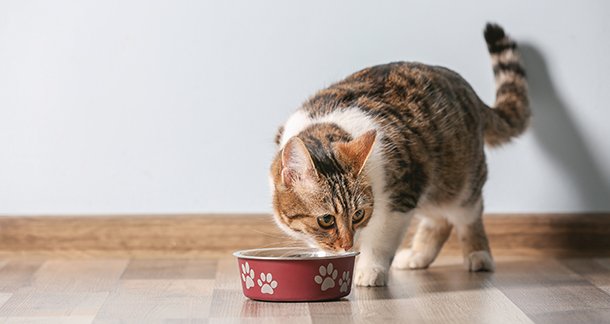As winter arrives, the chill in the air can drain your pet’s energy and affect their health. Like us, pets benefit from meals that keep them cosy and nourished. Warming foods do more than fill their bellies—they help regulate body heat and provide the energy needed to stay active. This guide is all about why these meals matter. Plus, we will also discuss nutritious choices, creative treat ideas, and tips for serving them with care.
Why Warming Foods Matter
Winter makes pets more susceptible to the cold, so adjusting their meals is essential. Warm foods keep their bodies comfortable, helping to combat low temperatures. They also supply the extra energy pets need when outdoor activities decrease. Nutrient-dense warm meals bolster immunity, protecting pets from seasonal illnesses. Additionally, warm meals are gentle on digestion, allowing better absorption of nutrients. Beyond physical health, they offer a sense of comfort that pets appreciate during colder months.
Nutritious Foods to Keep Pets Warm
Bone broth stands out during winter. It’s rich in minerals, hydrates, and is easy to digest. Pumpkin works great, too, thanks to its fibre and vitamins A and C. You can cook it, puree it, or add it to meals for extra nutrition. Sweet potatoes bring energy-boosting nutrients, making them ideal for pets who need stamina. Oatmeal—plain and free from additives—adds fibre, helping pets feel full for longer. Cooked chicken or turkey, shredded into meals, delivers warmth and protein. Rice acts as a gentle base and blends well with these ingredients to create balanced dishes.
These ingredients keep pets nourished and cosy. Adding them regularly ensures variety while supporting their health during the winter months. These are the detailed descriptions with the nutritional benefits of each:

|
Food/Treat |
Nutritional Benefit |
Description |
|
Bone Broth |
Rich in collagen and minerals |
Provides hydration and supports joint health, making it ideal for older pets. |
|
Pumpkin |
High in fibre and vitamins |
Aids digestion and boosts immune function. |
|
Sweet Potatoes |
Packed with beta-carotene and antioxidants |
Supports eye health and provides energy, making them a great winter treat. |
|
Oatmeal |
Good source of soluble fibre |
Helps regulate blood sugar levels and keeps pets feeling full longer. |
|
Chicken or Turkey |
High-quality protein source |
Essential for muscle maintenance and overall energy, especially during cold months. |
|
Rice |
Easily digestible carbohydrates |
A gentle energy source for pets recovering from illness or stress. |
|
Homemade Peanut Butter Biscuits |
Source of healthy fats and protein |
A tasty treat full of energy, perfect for active pets. |
|
Warm Pumpkin Pudding |
Combines probiotics and fibre |
Supports gut health while being a delicious winter dessert for pets. |
|
Sweet Potato Chews |
Nutrient-dense snack |
Provides vitamins while satisfying your pet’s chewing instincts. |
|
Chicken Broth Ice Cubes |
Hydration with added flavour |
Keeps pets hydrated while providing a tasty treat during playtime. |
|
Warm Apple Cinnamon Bites |
Antioxidants from apples and anti-inflammatory properties from cinnamon |
A delightful snack that promotes overall health. |
Treat Ideas to Brighten Winter Days
Peanut butter biscuits are easy to prepare and brimming with flavour. Mix whole wheat flour, oats, xylitol-free peanut butter, and water into a dough. Shape and bake until golden for a snack your pet will love.
Pumpkin pudding is another favourite. Blend the canned pumpkin with plain, unsweetened yoghurt and a touch of cinnamon. Heat gently and serve it warm as a dessert or snack. This treat is packed with fibre and vitamins, making it as nutritious as it is tasty.
Sweet potato chews are simple yet nourishing. Slice sweet potatoes thinly and bake until they’re chewy. These treats are rich in nutrients and satisfying for pets who enjoy a bit of texture.
Chicken broth ice cubes add a fun twist to treat time. Freeze chicken broth in moulds to create flavourful cubes that pets can enjoy after a brisk walk.
Apple cinnamon bites are a delightful option. You can combine diced seedless apples with oats, a sprinkle of cinnamon, and water. Warm the mixture slightly before serving as a snack or a meal topper. It’s a nutritious way to add variety to their diet.
These homemade treats are quick to make and bring excitement to your pet’s winter routine. Using wholesome ingredients ensures that they’re as healthy as they are enjoyable.

How to Serve Warm Foods Safely
Heat meals slowly to ensure even warmth and avoid creating hot spots that could burn your pet’s mouth. Always check the temperature before serving; it should feel warm but not too hot. Mixing warm foods with familiar meals enhances flavour and ensures balanced nutrition. Start with smaller portions to gauge your pet’s reaction before serving larger amounts. Use heat-safe containers to avoid harmful chemicals from leaching into the food.
Serving warm meals thoughtfully makes mealtime safe and enjoyable. Gradually introducing these foods helps pets associate them with comfort, making it easier to include new ingredients in their diet.
Conclusion
Warming foods and treats are so essential that you cannot measure them in one go. This content was to make pet owners aware of its importance when it comes to keeping their pets energised during the winter. So, there are nutritious options like bone broth, pumpkin, sweet potatoes, oatmeal, lean meats, and rice. All these are meant to be included in their diets to help them maintain their body temperature. Plus, homemade peanut butter biscuits, warm pumpkin pudding, sweet potato chews, chicken broth ice cubes, and apple cinnamon bites—all kinds of creative treat options are available as well. This will add variation to their meals while keeping them excited about food.
Overall, prioritising your pet’s dietary needs throughout the seasons is important as a responsible owner. Along with warming foods, proper serving techniques are essential too, as discussed. Hope this guide helps.

